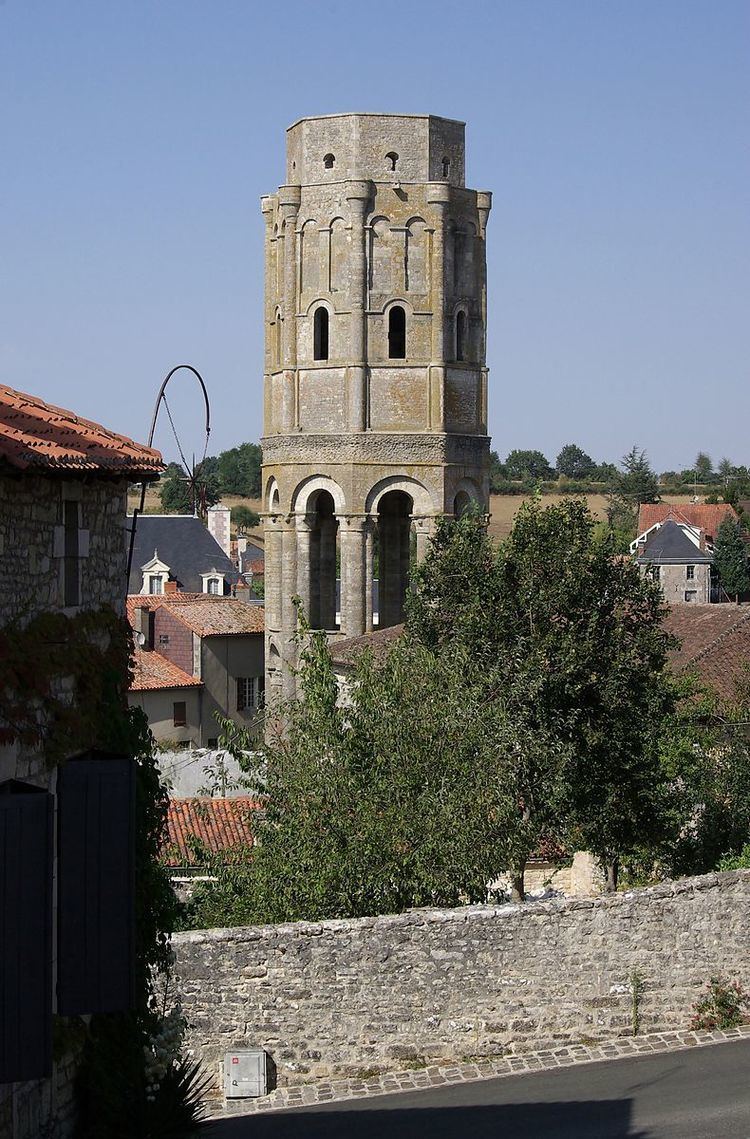Order Benedictine Phone +33 5 49 87 62 43 | Dedicated to Sanctus Salvator Disestablished 1762 | |
 | ||
Address 4 Place Saint-Pierre, 86250 Charroux, France Similar Chancelade Abbey, Val Abbey, Pontigny Abbey, Abbey Church of Saint‑Savin‑sur‑Gartempe, Église Saint‑Hilaire‑le‑Grand | ||
Charroux Abbey (French: Abbaye Saint-Sauveur de Charroux), is a ruined monastery in Charroux, in the Vienne department of Poitou-Charentes, western France.
Contents
History
Charroux was a Benedictine abbey, founded in 785 by Roger, Count of Limoges. It had up to 213 affiliated abbeys and priories. The Council of Charroux was held at the abbey in 989. Under the patronage of William IV, Duke of Aquitaine, the assembly of clergy founded the Pax Dei, or Peace of God. This agreement granted immunity from violence to noncombatants who could not defend themselves, beginning with the peasants and the clergy. Excommunication was established as the punishment for attacking or robbing a church, for robbing peasants or the poor of farm animals, and for robbing, striking or seizing a priest or clergyman who was not bearing arms.
The abbey church was rebuilt in the 11th century, and was one of the largest Romanesque churches in Christendom. Following the death of Richard the Lionheart, King of England and Duke of Aquitaine, in April 1199, the king's brain was buried at Charroux Abbey. The abbey was burned in 1422, during the Hundred Years War, and was plundered three times during the Wars of Religion, in 1562, 1569 and 1587.
In 1762 the abbey was abandoned. Following the French Revolution, the buildings, already in ruins, were sold for the national good in 1790. It was sold in five sections, and the buildings partly demolished to form a racecourse. However, the owner of the Charlemagne Tower resisted pressure to demolish the structure. Charles de Cherge and Prosper Mérimée intervened to save the remains of the monument, and the sculptures on the gate were purchased by the French state. The remains were classified as monuments historique in 1945 and 1950. Today, the remains are in the care of the Centre des monuments nationaux, and are open to the public.
Holy Prepuce
The abbey is said to have possessed the Holy Prepuce, the foreskin of Jesus, which was given to the monks by Charlemagne, King of the Franks from 768 to 814. In the early 12th century, it was taken in procession to Rome where it was presented before Pope Innocent III, who was asked to rule on its authenticity. The Pope declined the opportunity. At some point, however, the relic went missing, and remained lost until 1856 when a workman repairing the abbey claimed to have found a reliquary hidden inside a wall, containing the missing foreskin. The rediscovery led to a theological clash with the established Holy Prepuce of Calcata, which had been officially venerated by the Church for hundreds of years; in 1900, the Roman Catholic Church resolved the dilemma by ruling that anyone thenceforward writing or speaking of the Holy Prepuce would be excommunicated.
Abbey church
The only remaining structure of the church is the 11th-century lantern tower, known as the Charlemagne Tower. It formed the central rotunda of the abbey. Overall, the church was 126 metres (413 ft) long, although the site of the nave was built over in the 19th century.
Monastic buildings
Some of the monastic buildings survive, to the south of the abbey church. The chapter house was an extension of the south transept, and was built in the 13th century. In the 15th century by the abbot Jean Chaperon, including a flamboyant Gothic doorway which connected with the church. Three Gothic gateways were built in front of the Romanesque church facade in the 13th century. 27 sculptures of kings and abbots, and several parts of the gates, were preserved following the demolition of the church, and they represent the height of Gothic sculpture in the Poitou region. The sculptures are displayed in the chapter house.
Abbots of Charroux
This is an incomplete list of abbots and commendators of Charroux.
